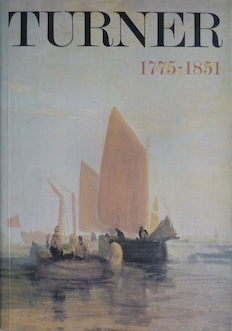|
16 XII 2024 |
6. Synthesis 1814-19
167 - England: Richmond Hill, on the Prince Regent’s Birthday | |

| ||
|
Exhibited with the following lines, attributed to Thomson: The large size of this picture is all the more surprising in view of its domestic, pastoral subject. Like the later 'What you will!' (No.307), this may reflect in part the effect of French eighteenth-century painting: Jerold Ziff has pointed out that several of the figures are based on a sketch in the 'Hints River' sketchbook after Watteau's ‘L'Ile Enchantée’ (T.B.CXLI-26v and 27; see Ziff's review of Gage 1969 in Art Bulletin, LIII, 1971, P. I26). The same sketchbook also contains drawings of the general view from Richmond Hill, a gift to the Claudian artist and next in popularity in the eighteenth and nineteenth centuries to that from Greenwich Park (10v-13). For other versions of this view see Nos.174, 256, 257, 434 and T.B.CCLXIII-348 (repr. in colour in Wilkinson 1974, p.30). The Turner Bequest also contains an unfinished oil of the same view in Turner's normal large format, 58 x 93 3/4 in (Tate Gallery 5546). There are only a few figures in the foreground and the painting was presumably abandoned when Turner turned to the unprecedented scale of the finished picture, perhaps inspired by the idea of doing homage to the Prince Regent, a possible and highly desirable patron. This is the first of Turner's Royal Academy exhibits in connection with which there is some hint at his activities on the three 'varnishing days’, granted to Academicians to give final touches to their pictures before the exhibition opened to the public. On 2 May 1819 Farington recorded criticism of the effect of ‘the flaming colour of Turner's pictures’ on their neighbours, immediately following this with a reference to ‘the pernicious effects arising from Painters working upon their pictures in the Exhibition by which they often render them unfit for a private room' (unpublished; see Gage 1969, p.167). The Repository of the Arts for June 1819, though liking the picture less than 'Entrance of the Meuse', praised ‘the fore-ground beautifully worked up, and the azure blue of the distances modified in all the gradations of aerial perspective'. The Annals of the Fine Arts, on the other hand, recommended Turner 'to pummice it down, give it a coat of priming, and paint such another picture as his building of Carthage' (R.A. 1815; National Gallery 498). An image generated by an AI Machine Learning Model Property of the artist. | ||
